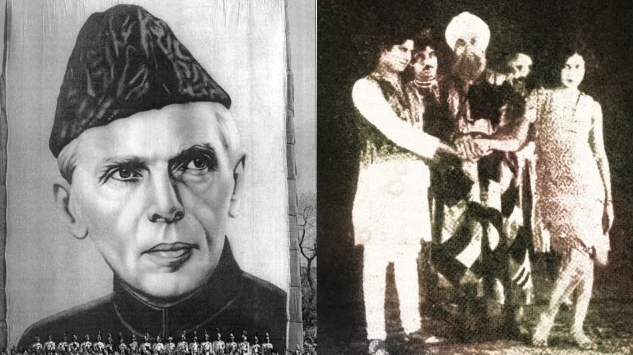When the Lumiere brothers’ film “The Arrival of a Train” premiered in 1896, it caused such a sensation that some viewers leapt from their seats, believing the train on screen was real and about to hit them. This illustrates the profound impact of moving pictures upon their introduction, as audiences struggled to distinguish between reality and cinema. In India, the advent of motion pictures coincided with British colonial rule, but it was Dadasaheb Phalke’s groundbreaking film “Raja Harishchandra” in 1913 that instilled in Indians the belief that they could establish their own thriving film industry. 111 years later, this conviction has proven to be well-founded. Just 18 years after “Raja Harishchandra,” India witnessed a fervent race to produce the first “talkie” film, where characters would speak their lines aloud, marking a significant leap forward from silent cinema. This quest culminated in the creation of “Alam Ara,” heralding a new era in Indian filmmaking.
In 1927, the groundbreaking release of “The Jazz Singer,” the world’s first talkie film, had already made its mark. A few years later, filmmaker Ardeshir Irani was inspired by Universal Pictures’ 1930 film “Show Boat” when he watched it in Mumbai (then Bombay). Recognizing the time was ripe to introduce India’s first talkie film, Irani embarked on the ambitious project. In a 1980 interview with BD Garga, Irani revealed the challenges they faced during production. With no soundproof stages available, filming had to be conducted indoors at night to minimize background noise for sound recording. The endeavor of making a talkie was shrouded in secrecy, as competing studios vied to achieve the milestone of producing India’s inaugural talkie film. Irani disclosed that the filming process stretched over many months, highlighting the complexities involved in mastering the recording of synchronized sound.
The challenges surrounding “Alam Ara” extended beyond its filming phase, beginning with the casting process. The magnitude of these issues escalated to the point where Muhammad Ali Jinnah, a prominent lawyer in Mumbai and a key figure in India’s struggle against British colonial rule, had to intervene. During this period, Jinnah was renowned for his legal expertise and his active role in advocating for India’s independence. As “Alam Ara” was still in the casting stages, many well-known silent film actors sought roles in this landmark production, intensifying the competition and complexities of the casting process.

Among the aspiring actors for “Alam Ara,” Master Vithal stood out for his popularity in action-packed movies. However, he faced a contractual dilemma as he was already bound by an agreement with Sharada Studio. Despite this, Master Vithal recognized the significance of transitioning to talkies and was eager to break free from his contract. Ardeshir Irani, too, saw the potential of casting Master Vithal to captivate audiences. However, complications arose when Sharada Studios took legal action against Master Vithal upon learning of his commitment to “Alam Ara.” In a pivotal turn, Master Vithal sought the legal expertise of Muhammad Ali Jinnah, the eminent lawyer of the era, to represent him in court. Jinnah’s adept defense ultimately secured Master Vithal’s freedom from his contractual obligations, enabling him to fulfill his desired role in “Alam Ara,” as reported in a Scroll article in 2015.
Jinnah, widely recognized for his pivotal role in founding Pakistan in 1947, had a notable connection to the performing arts. Following his education in England, Jinnah briefly contemplated a career in theatre, even considering joining a Shakespearean company. However, he abandoned this aspiration upon receiving a stern letter from his father. While he never pursued acting himself, Jinnah’s influence extended into the realm of cinema, particularly in facilitating the creation of India’s first talkie film. Despite his eventual historical association with India’s Partition, Jinnah’s involvement in advancing the Indian film industry remains a significant aspect of his legacy.
Despite the initial challenges in casting Master Vithal, Ardeshir Irani soon realized that the actor struggled with delivering dialogue effectively. Consequently, Irani adapted the scenes to minimize Master Vithal’s spoken lines. However, as the era of talkies gained momentum, Master Vithal’s career as a movie star gradually waned. Meanwhile, “Alam Ara” also featured Zubeida and Prithviraj Kapoor, whose descendants continue to be prominent figures in the film industry. The Kapoor family, often hailed as the “first family of Indian cinema,” includes actors Kareena Kapoor and Ranbir Kapoor, who are the great-grandchildren of Prithviraj Kapoor.
Just six weeks following the release of “Alam Ara,” Madan Theatres debuted “Shirin Farhad,” which achieved remarkable success, surpassing its predecessor in popularity. Despite its success, “Shirin Farhad” missed the opportunity to claim the title of India’s first talkie film. The year 1931 marked a significant milestone in Indian cinema with the release of 28 talkies, signaling the dawn of a new era in the world of movies.
